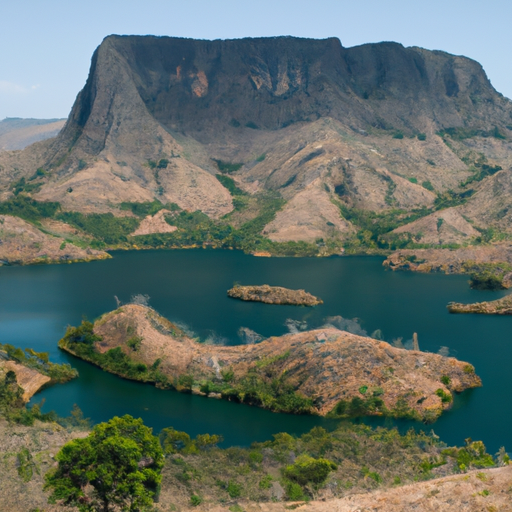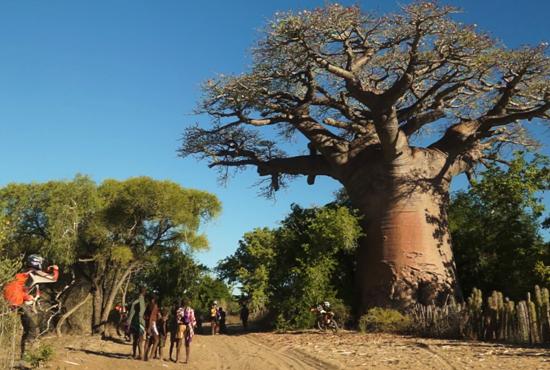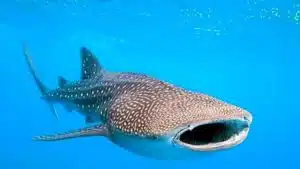Discover Madagascar: a paradise for travelers
Why choose Madagascar for your next trip
Madagascar, this unique island off the east coast of Africa, is a dream destination for nature and discovery enthusiasts. With incredible biodiversity, spectacular landscapes, and a rich culture, **a trip to Madagascar** promises unforgettable adventures. Wildlife and nature lovers will be delighted by endemic species such as lemurs, chameleons, and giant baobabs. Furthermore, the island’s diverse ecosystems, ranging from lush rainforests to white sandy beaches, offer a variety of landscapes to explore.
In addition to its natural wealth, Madagascar also captivates with its authenticity and lack of mass tourism. Travelers in search of authenticity and human encounters will find happiness here. The locals, known for their hospitality, are always ready to share their culture and traditions. **A stay in Madagascar** is therefore much more than just an exotic escapade; it is a total immersion in a unique world, where each encounter and experience enriches the journey.
The best times to visit Madagascar
The best time to **visit Madagascar** depends on what you want to see and do. In general, the dry season from May to October is ideal for exploring the island. The temperatures are pleasant and the roads are more passable, which makes getting around easier. It is also the perfect time to observe lemurs and other wildlife in their natural habitat. The months of July and August are particularly popular among tourists, especially those who want to enjoy the beaches and water activities.
The rainy season, from November to April, can make some places difficult to access due to muddy roads and the risk of cyclones. However, this period also has its advantages. The landscapes are green, waterfalls are at their peak, and accommodation prices are often lower. For photography enthusiasts, the light is often spectacular after a tropical rain shower. **Planning a trip to Madagascar** based on the weather is essential to fully enjoy your stay.
Must-see attractions in Madagascar
National parks not to be missed
Madagascar is home to several national parks that are true biodiversity treasures. The Isalo National Park, often compared to the American Grand Canyon, offers breathtaking landscapes with its rock formations, canyons, and natural pools. It is the ideal place for hiking and photography enthusiasts. Ranomafana National Park, on the other hand, is a humid tropical forest housing exceptional flora and fauna, including several species of rare lemurs.
Another must-visit park is Masoala National Park, which protects a large part of the island’s humid tropical forest. Accessible only by boat, this park is a true paradise for nature lovers. Visitors can observe whales, dolphins, and a multitude of endemic birds. **Exploring Madagascar’s national parks** is an unforgettable experience that will allow you to discover the richness and diversity of the island’s fauna and flora.
The paradise beaches of Madagascar
Madagascar is also renowned for its paradisiacal beaches, ideal for relaxing and enjoying the pleasures of the sea. The island of Nosy Be, located in the northwest of Madagascar, is one of the most popular seaside destinations. With its turquoise waters, white sandy beaches, and coral reefs, Nosy Be is a true haven of peace for sunbathers and scuba diving enthusiasts. The island also offers many water activities such as sailing, fishing, and snorkeling.
For those seeking quieter beaches, the island of Sainte-Marie, located off the east coast, is an excellent option. Known for its crystal-clear waters and coconut-lined beaches, Sainte-Marie is also a great spot for whale watching, as humpback whales migrate to the region from July to September. **Discovering Madagascar’s beaches** is an experience that will delight sun and sea lovers, while offering breathtaking landscapes.
Practical tips for a successful trip to Madagascar
Preparing your itinerary
Preparing your itinerary is essential to fully enjoy your **stay in Madagascar**. Given the size of the island and the diversity of its landscapes, it’s important to define your priorities and plan your travels accordingly. Start by identifying the sites and activities that interest you the most, whether it’s national parks, beaches, traditional villages, or nature reserves. Then, take into account the distances and transportation conditions, as the roads can be difficult to navigate, especially during the rainy season.
For a more enriching experience, consider hiring a local agency like Madagascar Trip’s & Pic’s, which offers personalized tours and tailor-made excursions. Whether you are a nature lover, a culture enthusiast, or an adventurer at heart, this agency will help you organize an itinerary that suits your desires and budget. **Planning a trip to Madagascar** with the help of local experts will allow you to discover less touristy places and have authentic experiences.
Administrative formalities and necessary vaccines
Before traveling to **Madagascar**, it is important to inquire about the administrative formalities and necessary vaccines. For French citizens, a visa is mandatory and can be obtained either upon arrival at the airport or from the Embassy of Madagascar in your country of residence. The tourist visa is usually valid for a duration of 30 days, with the possibility of an extension on site. Make sure your passport is valid for at least six months after the date of your return.
As for health, certain vaccines are strongly recommended for traveling to Madagascar. These include vaccines against hepatitis A and B, typhoid, yellow fever (if you are coming from a risk area), and rabies. It is also advisable to take preventive treatment against malaria, especially if you plan to visit rural or forest areas. Consult your doctor or an international vaccination center for personalized advice and to ensure that your vaccinations are up to date before your departure.
Malagasy culture and traditions
Local customs and festivals
Malagasy culture is rich and diverse, influenced by the African, Asian, and European origins of its inhabitants. Customs and traditions vary from region to region, but some practices are common throughout the island. For example, the famadihana, or turning of the dead, is a traditional funeral ceremony that involves exhuming the ancestors to wrap them in new shrouds and honor them with songs and dances. This tradition reflects the importance of ancestors and family ties in Malagasy culture.
Local festivals are also an excellent opportunity to discover Malagasy culture. The Donia Festival, held annually in Nosy Be, is one of the largest cultural events on the island. It celebrates Malagasy music, dance, and traditional arts, attracting artists and visitors from around the world. Participating in a festival in Madagascar will allow you to experience unique moments and gain a better understanding of the values and traditions that drive the island’s inhabitants.
Malagasy cuisine
Malagasy cuisine is a true reflection of the island’s cultural diversity. It is characterized by flavorful dishes, often based on rice, vegetables, fish, and meat. Romazava, a meat and greens stew, is one of the most popular dishes. Ravitoto, a dish made from pounded cassava leaves and pork meat, is also highly appreciated. Seafood such as shrimp, crabs, and fresh fish are abundant and delicious.
For those with a sweet tooth, Malagasy desserts are full of originality. The koba, a cake made from rice, cane sugar, and peanuts, is a must-try. Tropical fruits such as mangoes, lychees, and bananas are also abundant and make for a healthy and refreshing snack. **Tasting Madagascar’s cuisine** is a whole experience that will allow you to discover new flavors and better understand the local culture.
Activities and adventures in Madagascar
The best excursions and hiking
For hiking and adventure enthusiasts, Madagascar offers a multitude of possibilities. The Isalo massif, with its spectacular rock formations and canyons, is one of the best places for hiking. Well-marked trails allow you to discover breathtaking landscapes, natural pools, and hidden caves. The Andringitra National Park, with its steep peaks and verdant valleys, is also a paradise for hikers and climbers.
Trekking enthusiasts can also explore the island’s tropical forests, such as those in Ranomafana National Park or the Anjanaharibe-South Special Reserve. These protected areas are home to exceptional fauna and flora, as well as picturesque waterfalls and rivers. **Going on an excursion in Madagascar** will allow you to discover varied landscapes and have unforgettable adventures in the great outdoors.
Water activities and scuba diving
Madagascar is also a popular destination for water sports and scuba diving enthusiasts. The crystal-clear waters of the island offer ideal diving conditions, with exceptional visibility and incredible marine biodiversity. The coral reefs of Nosy Be and Sainte-Marie Island are among the best diving spots on the island. Divers can observe a multitude of tropical fish, sea turtles, manta rays, and even whale sharks there.
For those who prefer to stay on the surface, snorkeling is an excellent alternative. The shallow lagoons and coral reefs are home to rich and colorful marine life, accessible even to beginner swimmers. Water sports enthusiasts can also enjoy sailing, kitesurfing, windsurfing, and deep-sea fishing. Enjoying water activities in Madagascar is an unforgettable experience that will allow you to discover the underwater wonders of the island.
Where to stay in Madagascar
Luxury accommodations
For those seeking comfort and luxury, Madagascar offers several high-end accommodation options. Luxury hotels and lodges, often located in idyllic settings, offer quality services and modern facilities. The island of Nosy Be, for example, is home to several luxury resorts with overwater bungalows, spas, and gourmet restaurants. These establishments offer breathtaking views of the ocean and direct access to white sandy beaches.
The Andasibe-Mantadia National Park is also a popular destination for travelers seeking luxury. The lodges located near the park offer elegant and comfortable rooms, as well as guided excursions to discover the local fauna and flora. **Staying in luxury accommodation in Madagascar** will allow you to fully enjoy your trip while benefiting from high-end services and an enchanting setting.
Budget accommodation options
For travelers on a more modest budget, Madagascar also offers a variety of budget accommodation options. Youth hostels, guesthouses, and small hotels are scattered throughout the island, offering simple yet comfortable rooms at affordable prices. Fishing villages, such as those on the east coast, often offer homestay accommodations, allowing travelers to have an authentic experience and discover local life.
Campgrounds are another economical option for adventurers. Several national parks and nature reserves have designated camping areas where you can pitch your tent and enjoy the surrounding nature. **Choosing budget accommodation in Madagascar** will allow you to extend your stay and explore more places while respecting your budget.
Conclusion
In conclusion, **a trip to Madagascar** is an unforgettable adventure that combines nature, culture, and adventure. Whether you are a wildlife and flora enthusiast, a culture enthusiast, an adventurer, or simply in search of relaxation, the island offers a multitude of possibilities to satisfy all your desires. To fully enjoy your stay, do not hesitate to contact Madagascar Trip’s & Pic’s, a local agency specialized in personalized tours and authentic experiences. With their custom tours and packages, wildlife and nature exploration services, cultural immersion experiences, photography tours, adventure activities, and motorcycle tours and rentals, you are guaranteed to live a unique and memorable adventure.
FAQ
What budget should I plan for a trip to Madagascar?
The budget for **a trip to Madagascar** can vary considerably depending on your preferences and travel style. For an economical stay, count on spending around 30 to 50 euros per day, including accommodation, food, and local transportation. For a more comfortable stay, with mid-range accommodation and a few organized activities, plan between 70 and 100 euros per day. Luxury stays can cost much more, especially if you opt for high-end resorts and private excursions.
Is Madagascar a safe destination for travelers?
Madagascar is generally a safe destination for travelers, provided that you take some basic precautions. Avoid walking alone at night in big cities and isolated areas, and be vigilant with your personal belongings. It is also recommended to hire local guides for certain excursions, especially in rural areas. By following these tips, you can enjoy your **stay in Madagascar** safely.
What are the typical dishes to absolutely taste?
Among the typical dishes to taste during your trip to Madagascar, do not miss the romazava, a meat and vegetable stew, and the ravitoto, made from pounded manioc leaves and pork. Seafood, such as shrimp and crab, are also delicious and abundant. For those with a sweet tooth, the koba, a cake made from rice and peanuts, is a must-try.
How to get around in Madagascar?
Getting around in Madagascar can be a challenge due to the condition of the roads and the long distances. Taxis-brousse are the most common and cheapest means of transportation for intercity travel, but they can be uncomfortable and slow. For more comfort, you can rent a car with a driver or opt for domestic flights between major cities. Getting around in Madagascar requires patience and good planning, but it’s all part of the adventure.
What souvenirs to bring back from Madagascar?
Madagascar offers a variety of unique handmade souvenirs to bring back. Carved wooden objects, jewelry made from precious and semi-precious stones, wild silk fabrics, and raffia baskets are among the most popular items. Local markets and craft shops are the best places to find authentic souvenirs. Bringing back souvenirs from Madagascar is a great way to keep a piece of this fascinating island with you.








